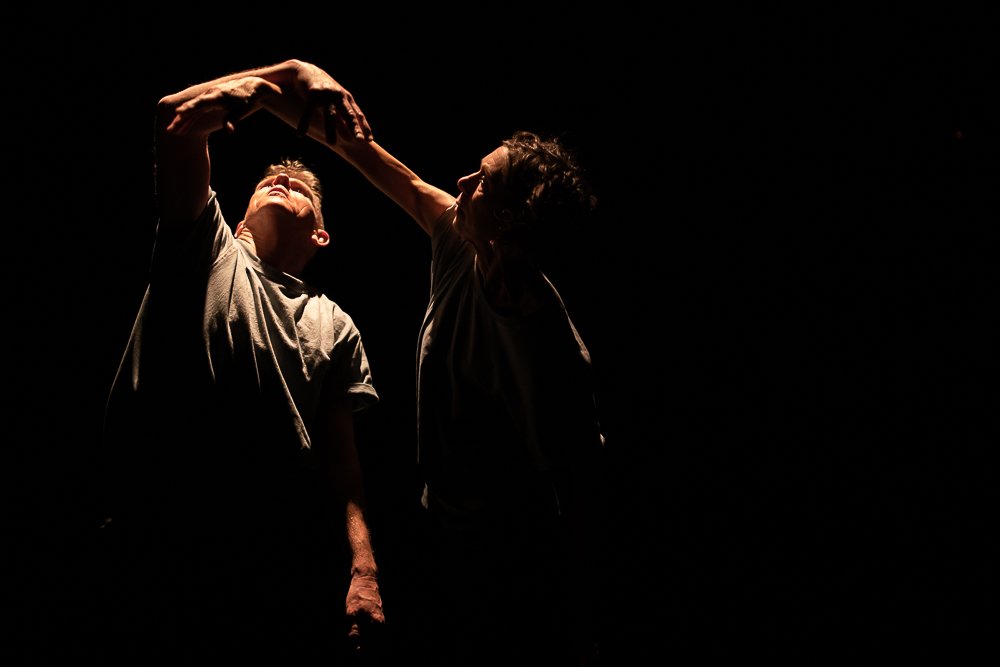
From a very young age western society prioritises attention of the mind…
Focus – Sharing Ideas from our Ethnographic Research
As participant ethnographic research and dancer with EncoreEast I have spent many hours wondering, why? Why do sixteen older adults spend so much emotional and physical energy learning, creating and performing dance. Each of us has a different lived experience of dance. We have participated in dance to varying degrees throughout our lives. We are now choosing to learn and develop as older dancers, not to extend a career but to begin a journey. Ours is not a path well-trodden. We have no preconceived end-goal that drives us on, powering our motivation, commitment and effort.
In my research for ‘Focus’ our project with the Russell Maliphant Dance Company (RMDC) I used a grounded theory approach in field work allowing themes to emerge from our experience. This created a rich seam of participants’ data. I identified themes that at least 12 of the 15 participants referred to in their spoken and written diaries.
Three words emerged frequently from the data collected. The words were Try, Balance and Joy. Using these words as a guide for my research, I have delved deeper into the ideas being articulated by the participants and triangulated them with relevant literature.
During our six-week on-line introduction to RMDC technique, each workshop began with focus into the feet. We concentrated on the precise feeling of our weight into anatomical divisions of our feet. We directed focus to each individual toe, lifting and lowering with isolation or connection. Such seemingly simple tasks required skills we quickly realised we didn’t possess. Through discussion all fifteen participants articulated the feeling of simply not knowing. It wasn’t that we couldn’t lift the toe, adjust the weight or push into the ball of the foot. We actually couldn’t get our minds to recognise the individual areas within our feet. We were at a loss.
From a very young age western society prioritises attention of the mind. The remnants of belief in the dualist mind/body divide influences what we think, over what we do. As soon as we start school our movement is curtailed, we sit, think and learn. Endless thoughts narrate our lives, decide our future and remember our pasts. Unsurprisingly, we have forgotten how to focus on our bodies. Phenomenal philosophy cohesively reconnects mind and body. This does not mean we cannot distinguish between the elements that make up the whole being, just that each element is connected (Husserl, 1931). Years of focusing predominately on our minds, has distracted us to the point of not knowing how to sense the experience of being in our feet, but we were all willing to try.
Zoom and a long summer gave us the opportunity to revisit classes. By shortening and repeating them regularly we were able to focus on the detail. We had time to hear what was articulated and space to locate the movement within our bodies. Participants discussed the feeling that virtual Edd or Alethia were present, encouraging us. We also understood with each small gain that we were responsible for our own attention and learning.
Through the autonomy developed by RMDC’s technique, we slowly developed competence and by sharing each small win in discussion, we strengthened connections and helped knowledge spread between us.
September finally arrived and we started the intensive workshops, boosted by our growing understanding of RMDC’s technique and our own embryonic progress. The rush of excitement experienced on returning to dance together in the studio was immeasurable. Added to this the pure pleasure of seeing Edd and Alethia live. We had come to know them so well as their virtual selves, it was like greeting a long-lost friend. This helped to create a space of easy communication amongst us. We trusted them and very quickly it became evident they trusted us. One participant noted:
‘Alongside the power of their focus, they have a lightness and good humour that made me feel supported. At times I loved feeling like part of a puzzle to be solved, a dancer’s toy box. We might be a bit scruffy and well-worn, but our long-life experience felt valued. I loved the sense of enabling the dancers to create and play; it felt like a fair exchange for their expertise and care.’
During the eight-week creative project, balance became the gain most often spoken about. By locating our weight into the feet, we began to notice moments when the impact of our improved balance transferred into our dancing. It often caught us by surprise, our ‘sudden’ ability to achieve a movement that had previously eluded us.
‘I can at last report that this week I had my very first physical eureka moment. At long last I could feel the warmth beneath my feet and the roots of my personal tree growing deep into the earth! It was a totally amazing experience and one I can still feel now. Keeping that going is the challenge.’
On our final day of rehearsal Edd and Alethia joined us in improvisation. Gradually our own movement filtered to a pause as we watched in awe. The flow travelled through and between them, uniting them in motion, seemingly without beginning or end. In that moment I understood, why. Why sixteen dancers aged 54 to 80 spend so much energy learning, creating and performing dance.
RMDC’s holistic technique has a focus on the whole experience of dance. It demonstrates the possibility of focusing attention and joining mind, body, emotion and spirit in the movement and moment of creativity. When else in life do we utilise equally all of who we are? I suggest this is the ultimate goal in all creative activity. Put simply, it is the human need to feel a sense of completion, with ourselves and humanity. RMDC technique offers us a template to begin.
During our engagement with RMDC, the extrinsic motivation of wanting to make the project successful became intrinsic motivation. It helped us direct our learning and outcomes, facilitating the most expressed outcome ‘Joy’.
By Stella Eldon
FOCUS.
Watch the film and documentary here.


